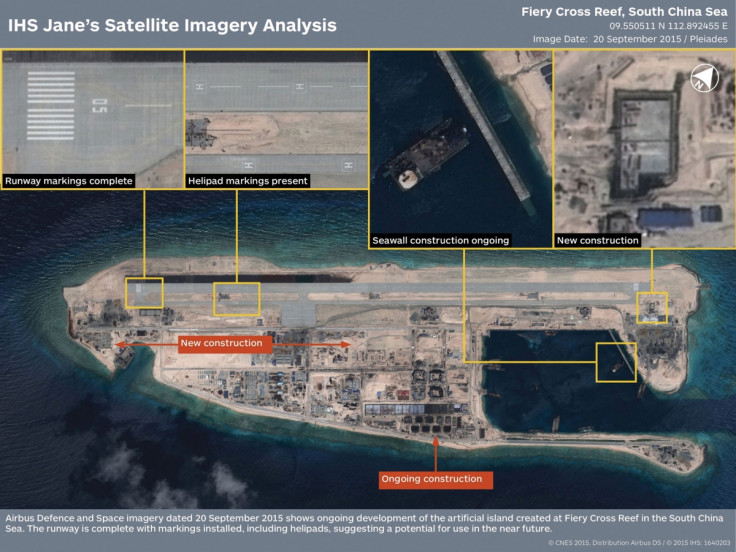South China Sea dispute: Beijing lands 2 civilian planes on Fiery Cross Reef

China has landed two civilian planes on its newly built artificial island on the disputed South China Sea, despite overlapping claims to the territory from five other nations in the region. According to Chinese state media, the planes landed on the Fiery Cross Reef in order to test the standard of the airstrip.
Xinhua news agency also released pictures of two passenger planes after their successful landing on the disputed Fiery Cross Reef. The planes had made their journey from China's southern island province of Hainan on 6 January. China, on 2 January, had landed a passenger plane on Fiery Cross Reef, which had raised international concerns with Vietnam and the Philippines strongly condemning China's blatant show of power.
"Relevant activity falls completely within China's sovereignty. The Chinese side will not accept unfounded accusations from the Vietnamese side," Chinese foreign ministry spokesperson Hua Chunying had said in a statement after the landing of the passenger plane on 2 January. "China has indisputable sovereignty over the Nansha Islands and their adjacent waters. China will not accept the unfounded accusation from the Vietnamese side," the spokesperson had said.
China has been accused of flaring up tensions by building artificial islands and claiming almost all of the disputed South China Sea. Brunei, Malaysia, Philippines, Taiwan and Vietnam have overlapping claims over the region as well.
The US has been a vocal critic of China's man-made islands and its show of military might in the disputed region. On 10 December, the US flew its B-52 bomber within two nautical miles of China's man-made islands on the Cuarteron Reef in the disputed Spratly archipelago. US warships have also carried out freedom of navigation exercises in the region.
The South China Sea, from where trade worth an estimated $5tn (£3.43tn) passes through, is believed to have massive natural reserves of oil and gas.
© Copyright IBTimes 2025. All rights reserved.




















